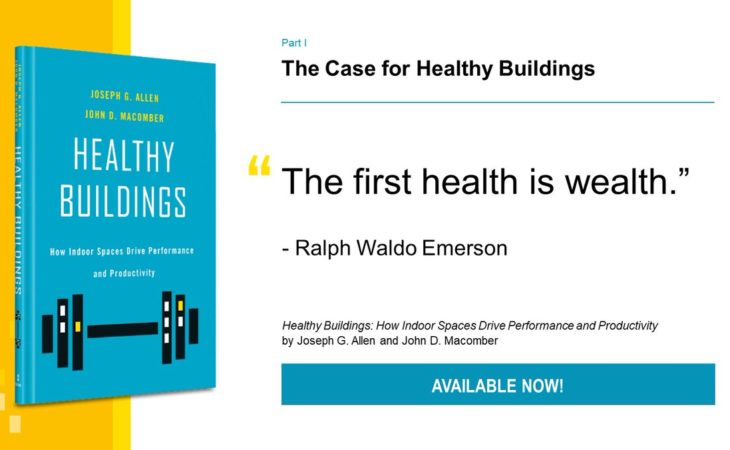
Healthy Buildings
How Indoor Spaces Drive Performance and Productivity
By Joseph G. Allen and John D. Macomber
I recently read a book, Healthy Buildings (published in 2020, so written pre-covid-19), that was relevant to both the covid-19 impact on corporate real estate and more specifically the bottom-line benefits of having a healthy building. Although the book was comprehensive, the structure was straight-forward and provided a smart road map for a healthy building.
There is a reasonable argument (that can be calculated) that:
Healthy buildings = healthy and happy workers = less absenteeism, higher productivity, & less tenant vacancy.
They authors do a good job laying out the business case and economics around that including related calculations. I imagine scenarios where these calculations help justify the implementation of IoT projects and associated connectivity resources.
Of particular interest, is their detail on each dimension (or foundation, in their words) for a healthy building:
The focus is not on sustainability for its own end, rather about the quality of the environment for people. IoT and other technologies enable and support the managed of these environments effectively. This is the business we are in. Ultimately, the connectivity business has to be about enabling great technology that support optimal work environments.
While I won’t go into the nuance of all the foundations (you can read the book!), Safety and Security (#9) seemed to cover a lot of the dimensions that create a lot of stress for those in this business. The dimensions it calls out for Safety and Security are (descriptions paraphrased):
#3 and #5 above tie into management for covid-19 explicitly from my perspective, in terms of controlling who gets access and ensuring people feel safe.
The book also deals with how the health of a building can be measured and certification for that. For my purposes, this is a topic for another day. However, we know that what gets measured gets done, and in order to obtain the ROIC, you have to be able to look at results and validate the achievements (or lack thereof). IoT (and the connectivity) supporting that remains critically important.
At any rate, this was an interesting book that provided structure around what a healthy building can be. Highly recommended.
I hope that the projects Ballast engages in the future support these kinds of efforts!